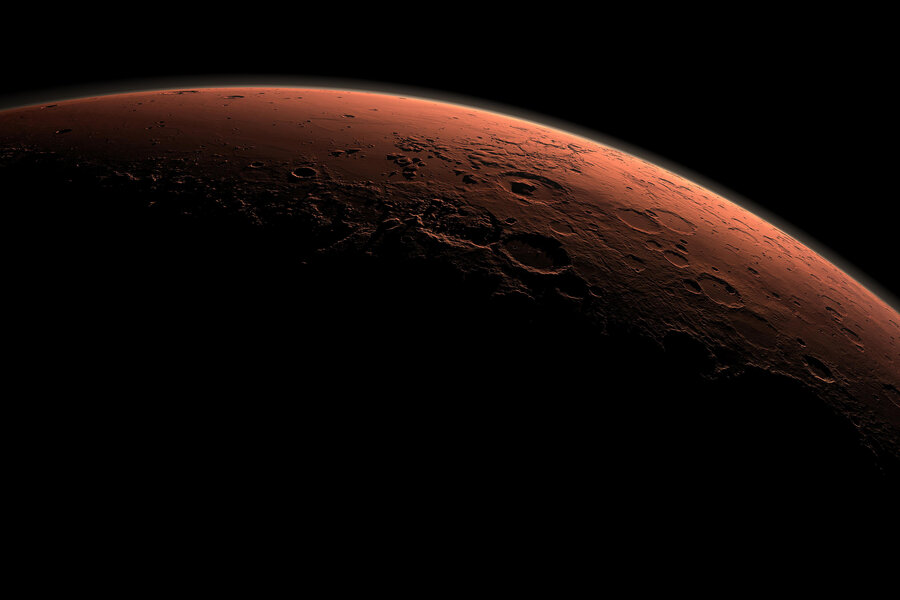A year in a bubble: NASA begins most ambitious Mars-analog mission yet
Loading...
On Friday, a team of six sealed themselves inside a dome for a year, all in the name of science. Or at least, in the name of Mars.
The three men and three women, all scientists, are attempting to simulate what life would be like during a Mars mission. During the NASA-funded experiment, they will spend 365 days inside a 36-foot-wide, 20-foot tall-dome on the northern slope of Hawaii's Mauna Loa volcano.
"The HI-SEAS site presents a remarkably high-fidelity environment for this type of long-duration space study," said UH Mānoa’s Kim Binsted, the principal investigator for HI-SEAS III, in a NASA press release. "Looking out the single porthole window, all you can see are lava fields and Mauna Kea in the distance. Once the door is closed, and the faux airlock sealed, the silence and physical separation contribute to the ‘long way from home’ experience of our crew members."
The year-long isolation project is NASA's fourth mission in the Hawaii Space Exploration Analog and Simulation (HI-SEAS) research project and the longest US isolation experiment to date. HI-SEAS IV is the second-longest Mars analog in the world, surpassed only by the third mission of the Mars500 project, jointly conducted by Russia, China and the European Space Agency, during which six men lived for 520 days in a contained 12-by-66 foot capsule.
NASA is using the HI-SEAS missions to study crewmember cohesion and the emotional and psychological effects of living in cramped quarters with limited exposure to sunlight.
Sound like a recipe for disaster? Just imagine an actual crewed mission to Mars, which NASA estimates could take three years to complete. That’s 1,095 days in isolation with the same handful of people.
Who is going?
Fortunately, the HI-SEAS IV team is an extraordinary group: crew commander and soil scientist Carmel Johnston, architect Tristan Bassingthwaighte, doctor and journalist Sheyna Gifford, German physicist and engineer Christiane Heinicke, pilot and former flight controller at Lockheed Martin Andrzej Stewart, and French astrobiologist Cyprien Verseux.
Each will have their own particular tasks during the mission.
Mr. Bassingthwaighte is completing his doctorate in architecture, and he will be investigating how to create more livable environments in the extreme climates of Mars and Earth.
Ms. Johnston will research food production under artificial light.
Mr. Verseux will work on "making human outposts on Mars as independent as possible of Earth, by using living organisms to process Mars’ resources into products needed for human consumption," according to an article posted by University of Hawaiʻi at Mānoa.
As they perform their work, each member will have a sleeping cot and desk and be unable to go outside without donning a spacesuit, reported the BBC.
At least they will be able to leave the enclosure, unlike the team who spent two years inside the glass Biosphere 2, also in the name of science.
To simulate needed protection from solar radiation, the HI-SEAS dome has only one small porthole, reported ABC News. While factors such as weightlessness can’t be simulated, the dome does regulate electricity use, rely mainly on solar power, and have a strictly limited water supply.
"Showers in the isolated environment were limited to six minutes per week," wrote HI-SEAS Mission III member, Jocelyn Dunn on her blog.
The crew will have Internet access, with a built-in delay of 15 to 20 minutes to simulate the time it would take a radio signal to travel from Earth to Mars at the speed of light.
Is it worth it?
"I believe in a humankind that is space-faring, that expands its frontiers," said Diego Urbina, one of the men from the Mars500 team, in a video. "I believe we cannot risk losing everything we have done by putting all our eggs in one basket – Earth.”
In her blog, HI-SEAS IV doctor and journalist Ms. Gifford writes, “My existence on this planet means that we’re headed for Mars someday, maybe even someday soon.... I’m going to Hawaii now. Then a handful will make it all the way there.”
While experimental data from the mission is confidential, you can follow crew members Gifford, Mr. Stewart, and Mr. Verseux on their personal blogs.
NASA anticipates at least fifteen years before a crewed mission will actually launch for Mars.





